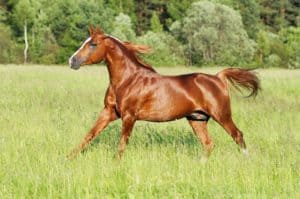Checking the Vitals: The Lungs
My last post was an overview of heart sounds and function. Commonly, the heart and lungs are considered as synchronous systems where cardiac function and lung function are referred to frequently as the cardio-pulmonary system. Think of the living cells of your body and that of your horses’ needing oxygen to stay alive while having to remove the waste product of metabolism, carbon dioxide. We need a system to pick up the oxygen, take it to the tissue cells, grab the waste, and remove it from the body.
Get to Know Your Lungs
Obviously, we breathe in oxygen from the air into our lungs and transport and exchange it through our blood transport system. The heart pumps oxygenated blood to capillaries in our tissue, then pumps deoxygenated blood back to the lungs, exchanges it again and we exhale the used carbon dioxide from our lungs. That exchange of oxygen and carbon dioxide must be precise to sustain the balance of life. The balance is called the ventilation (lungs) to perfusion (circulation) ratio. If an imbalance of either blood circulatory function or lung air function is present, we will be sick, unable to perform, or could even die.
Lung function has a seemingly simple task: to oxygenate cells efficiently. It is really a complex process that requires blood flow with rate adjustments, changes in blood vessel size and pressures, blood components such as hemoglobin to be the carrier, sensors from the brain and vessels to detect acid and alkaline imbalances, and precise tissue thicknesses between the lung alveoli and the blood capillaries for optimum gas exchange.
When we change the demand or consistency of oxygen access, the cardio-pulmonary systems adjust accordingly. Examples of heart and breathing rate adjustments occur while exercising or during exposure to high altitudes with lower oxygen content. The mechanics of the chest must also have normal compliance. The spring-loaded recoil following the end of inspiration involves stimulation of the intercostal muscles between the ribs and the diaphragm. Of course, we must respect the upper airway that serves as a complex spigot that if abnormal air cannot effectively get into or out of the lungs. The need for air is perpetual and life is dependent upon the constant availability and exchange of air
Create a free account with TheHorse.com to view this content.
TheHorse.com is home to thousands of free articles about horse health care. In order to access some of our exclusive free content, you must be signed into TheHorse.com.
Start your free account today!
Already have an account?
and continue reading.
Written by:
Doug Byars, DVM, Dipl. ACVIM
Related Articles
Stay on top of the most recent Horse Health news with












